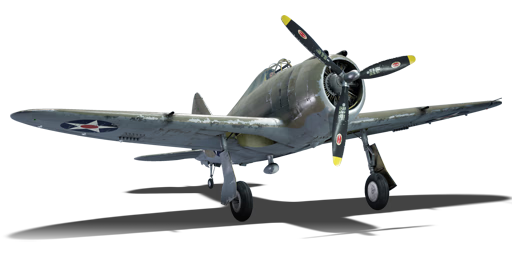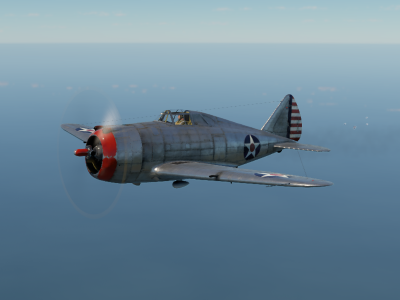


The P-43 Lancer was started as a private venture by the Seversky Aircraft Company (later known as Republic) which sought to improve upon its earlier fighter design the P-35. Several design changes turned this fighter into a good platform of which made the leap to the younger sibling, the P-47. When introduced to the United States Army Air Corps (USAAC) in 1940, the (Y)P-43 was the only fighter which excelled at high-altitude performance due to its belly-mounted turbo-supercharger and an effective oxygen system to sustain the pilot at those heights. However, despite a short production run in 1941, the USAAC considered the P-43 to be obsolete from its introduction, only using them for training purposes. 125 aircraft were lend-leased to China with the "Flying Tigers" where they found some success against Japanese forces, but they were also found to be less survivable than the P-40 Warhawks that were also in service and were eventually replaced by early 1944.
The P-43 was introduced in Update 1.69 "Regia Aeronautica" and was obtainable during the 2017 Operation S.U.M.M.E.R. and the 2018 Festive Quest events. Much like its predecessor and successor, it is a heavy fighter with a large engine which fills the role of a fighter/interceptor. Japanese aircraft at this rank can still outturn the P-43, but if used properly as a Boom & Zoom fighter, there should not be any need to turn fight. Priorities are to gain altitude and then be selective of the targets. Use diving speeds to zip in, shoot the enemy aircraft and then pull up and climb away. Resist the temptation of immediately turning back and finishing off an aircraft which was missed or wounded as doing so will only cause the P-43 to bleed energy it needs to work at its optimum. As a last resort, if caught in a situation where you need to dogfight, do so, but look for a way out so that you don't become easy pickings for another enemy pilot.
flaps
flaps
flaps
brake
| Belt | Belt filling | Armor penetration (mm) at a distance: | |||||
|---|---|---|---|---|---|---|---|
| 10 m | 100 m | 500 m | 1000 m | 1500 m | 2000 m | ||
| T/Ball/Ball/I/AP-I | 28 | 26 | 18 | 11 | 7 | 4 | |
| AP-I/AP-I/AP-I/T/I | 28 | 26 | 18 | 11 | 7 | 4 | |
| T/AP/AP/AP/AP-I/I | 30 | 27 | 20 | 13 | 9 | 6 | |
| T/T/T/T/T/AP-I | 28 | 26 | 18 | 11 | 7 | 4 | |
| AP/AP-I/AP-I/I/I | 30 | 27 | 20 | 13 | 9 | 6 | |







 2 x (50 / 100 / 250) %
2 x (50 / 100 / 250) % 
 2 x 124 %
2 x 124 % 

Flight performance | |
|---|---|
Survivability |
|---|
Weaponry |
|---|
